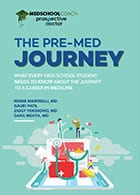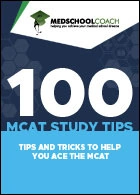
Table of Contents
You can get your MD or DO in three years! Of course, this accelerated track is competitive to get into and rigorous to complete in time. You typically apply to 3-year medical schools through the normal application services, but admission requirements are tougher than 4-year schools.
A 2025 study showed that students who earned an MD in only three years of medical school performed just as well as 4-year MD students by most metrics. Their USMLE scores were slightly lower (likely due to reduced study time), but post-residency exams yielded similar results in both groups.
These programs squeeze DO and MD programs into three years instead of four years, but they don’t water down the curriculum or the required competencies. They’ve been around since WWII due to concerns about primary care physician shortages. Recently, accelerated pathways have been seen as a solution to ballooning student debt.
As of this writing, 33 accelerated MD medical schools comprise CAMPP (Consortium of Accelerated Medical Pathway Programs). Keep reading to see if these fast-track programs are right for you.
MedSchoolCoach advisors have helped thousands of students DOUBLE their chances at getting accepted to medical school. Let us help you make it all worth it.
The Pros
Here are the primary pros of accelerated medical degree programs:
- Lower cost. The original benefit during WWII was to accelerate physician training, but today, a key advantage is reduced financial burden. Completing medical school in three years instead of four can save students thousands of dollars, though actual savings vary depending on tuition structure, financial aid, and cost of living.
- Salary sooner. You’re also going to start making money a year earlier after graduating from an accelerated program, which is especially great for older non-traditional students who are changing careers and need a salary quicker. Plus, simply applying your knowledge to patient care a year earlier than normal can be rewarding.
- Residency connections. There’s not just a financial benefit; most accelerated programs also connect with residency programs that automatically match students as long as they keep their grades and scores up. Already having a residency lined up can make your experience in the Match less stressful.
- Mentorships. Typically, these accelerated programs offer special access to faculty mentors and program directors, direct pathways to research and research mentors, and special attention from your advisors.
Read Next: Best MD Schools for Non-Traditional Students
The Cons
Below are the cons of accelerated 3-year medical schools:
- More competitive. There are far fewer spots in accelerated programs than in conventional medical schools. Plus, the average GPA and MCAT scores are significantly higher for accelerated program matriculants than conventional MD matriculants. This means you’ll need a competitive application to stand out and secure your spot.
- More rigorous. Accelerated medical schools do not water down curriculum — you’ll need to buckle down and do all the work of a 4-year MD degree in just three years. That means you do 33% more work per year than a conventional MD student. There are often stricter GPA requirements during your time in a 3-year program.
- Less time to choose a specialty. If you’re nowhere near choosing a specialty, you’ll have less time to determine the exact route you want to take. Some accelerated programs may require you to choose a specific specialty or do a certain residency. You’ll also have less time for optional electives that can shape you as a doctor and human being.
3-Year vs. 4-Year Medical Programs
Other than the one-year difference in the time you spend in medical school, there are a few additional things that set traditional versus accelerated medical programs apart:
- Money. You spend less money on tuition and start making money a year earlier with a 3-year medical school. This is likely to result in cost savings of several tens of thousands of dollars.
- Workload. The accelerated 3-year programs contain roughly the same amount of required coursework, meaning you have to work harder over a shorter period of time. You’ll likely spend much longer hours, but one fewer year, on studying, rotations, clerkships, residencies, and fellowships. You may spend fewer credit hours on elective courses or certain extracurriculars.
- Test scores. Typical MD students take USMLE Step 2, and DO students take COMLEX Level 2 in their fourth year, but accelerated program students take these exams in their third year at the latest. With less time to study, 3-year students may perform slightly worse on USMLE Step 1, Step 2, COMLEX Level 1, and Level 2 than their 4-year counterparts, but data show similar test scores between both groups throughout and after residency.
- Residency connections and specialty options. Many accelerated DO and MD programs are associated with residencies that grant automatic acceptance on certain conditions. However, some conventional osteopathic and medical schools also have special connections with residencies or fellowships that vary by school. And be aware: several, though not all, 3-year DO and MD programs with residency program links are for a limited number of specialties, most commonly general surgery, family medicine, and internal medicine.
Accelerated MD Programs in the U.S.
Below are all available 3-year medical programs in the United States. Most are the member schools of the Consortium of Accelerated Medical Pathway Programs (CAMPP), which are all accelerated three-year MD programs, but one is not a listed member school of this consortium.
- NYU Grossman School of Medicine (led by CAMPP chair Joan Cangiarella, MD)
- New York University Grossman Long Island School of Medicine
- McMaster University DeGroote School of Medicine
- Texas Tech University Health Sciences Center School of Medicine
- Mercer University School of Medicine
- University of California Davis School of Medicine
- Medical College of Wisconsin Green Bay
- Medical College of Wisconsin Central Wisconsin
- Penn State College of Medicine
- Cooper Medical School of Rowan University
- The Ohio State University College of Medicine
- University of Kentucky School of Medicine
- Medical University of South Carolina College of Medicine
- University of South Carolina School of Medicine Greenville (not a member of CAMPP)
- University of North Carolina School of Medicine
- Stony Brook University Renaissance School of Medicine
- Hackensack Meridian School of Medicine
- Meharry Medical College
- Virginia Commonwealth University School of Medicine
- Rutgers New Jersey Medical School
- University of Tennessee
- Wayne State University School of Medicine
- University of Arkansas Northwest College of Medicine
- Augusta University Medical College of Georgia
- Wright State University Boonshoft School of Medicine
- University of Massachusetts Medical School
- University of Miami Miller School of Medicine
- West Virginia University School of Medicine
- University of Oklahoma Tulsa School of Community Medicine
- University of Arizona Tucson College of Medicine
- Geisinger Commonwealth College of Medicine
- Upstate Medical University School of Medicine
Accelerated DO Programs in the U.S.
A few osteopathic medical schools offer accelerated 3-year DO programs, primarily for students committed to primary care specialties.
- Lake Erie College of Osteopathic Medicine (LECOM)
- Kansas City University (KCU) has a partnership with CHI Health
- Michigan State University College of Osteopathic Medicine (MSUCOM)
Currently, these DO programs are not members of CAMPP, so check with AACOM to be sure if any schools where you plan to apply offer accelerated programs.
Implications for Residency
Many accelerated programs offer automatic placement in certain residencies, although you’re not always required to accept that placement. Often, you can instead apply for the Match like any other graduating medical student.
In other words, a 3-year medical education typically makes it easier to get into residency, assuming you are willing to complete your residency at the one connected to the medical program.
Read Next: Average Resident Salary
Enrolling in an accelerated program may limit what residency specialty you pursue unless you want to go to a non-linked residency. Many 3-year schools have just a handful of specialties to choose from, often including family medicine, internal medicine, OB/GYN, and pediatrics.
Is 3-Year Medical School Right for You?
If you have a strong academic record, excellent time-management skills, and a clear commitment to a specific specialty, an accelerated medical school program could be a great fit. These programs are fast-paced and demanding and require students to handle a condensed curriculum, limited flexibility, and early residency decisions.
However, they offer significant financial savings, an earlier start to your career, and a direct pathway into residency — especially in primary care or other targeted specialties. Carefully consider whether you can thrive in a high-intensity environment while maintaining strong academic performance and clinical readiness.
We recommend applying to 4-year programs, too, as a fallback. But if you want to increase your chances of acceptance in an accelerated medical school, we can help.
We have helped thousands of pre-meds make their MD application outstanding. You’ve come to the right place.

Sahil Mehta MD
Dr. Mehta is the founder of MedSchoolCoach and has guided thousands of successful medical school applicants. He is also a practicing physician in Boston where he specializes in vascular and interventional radiology.





